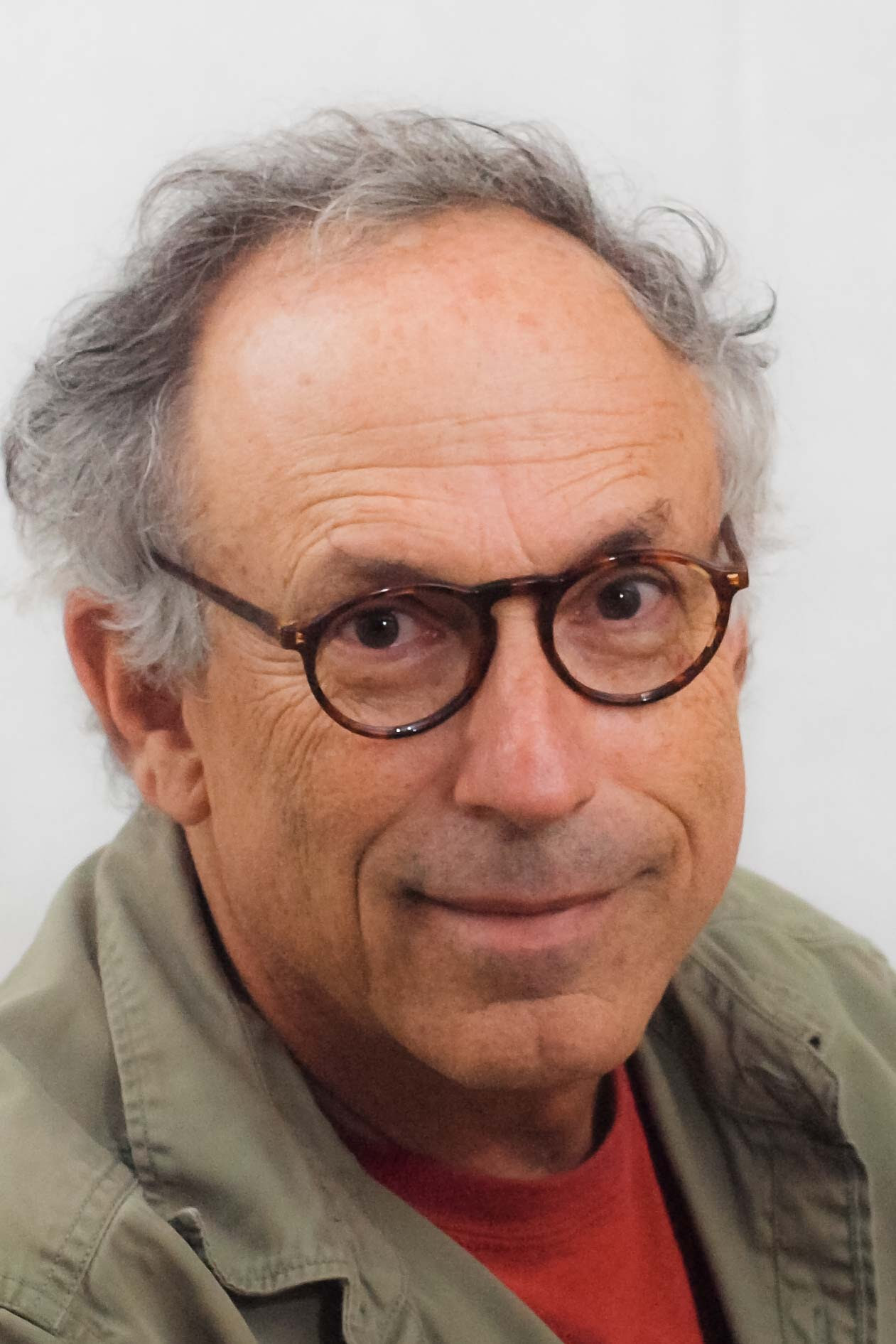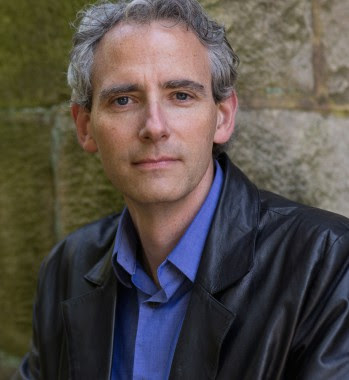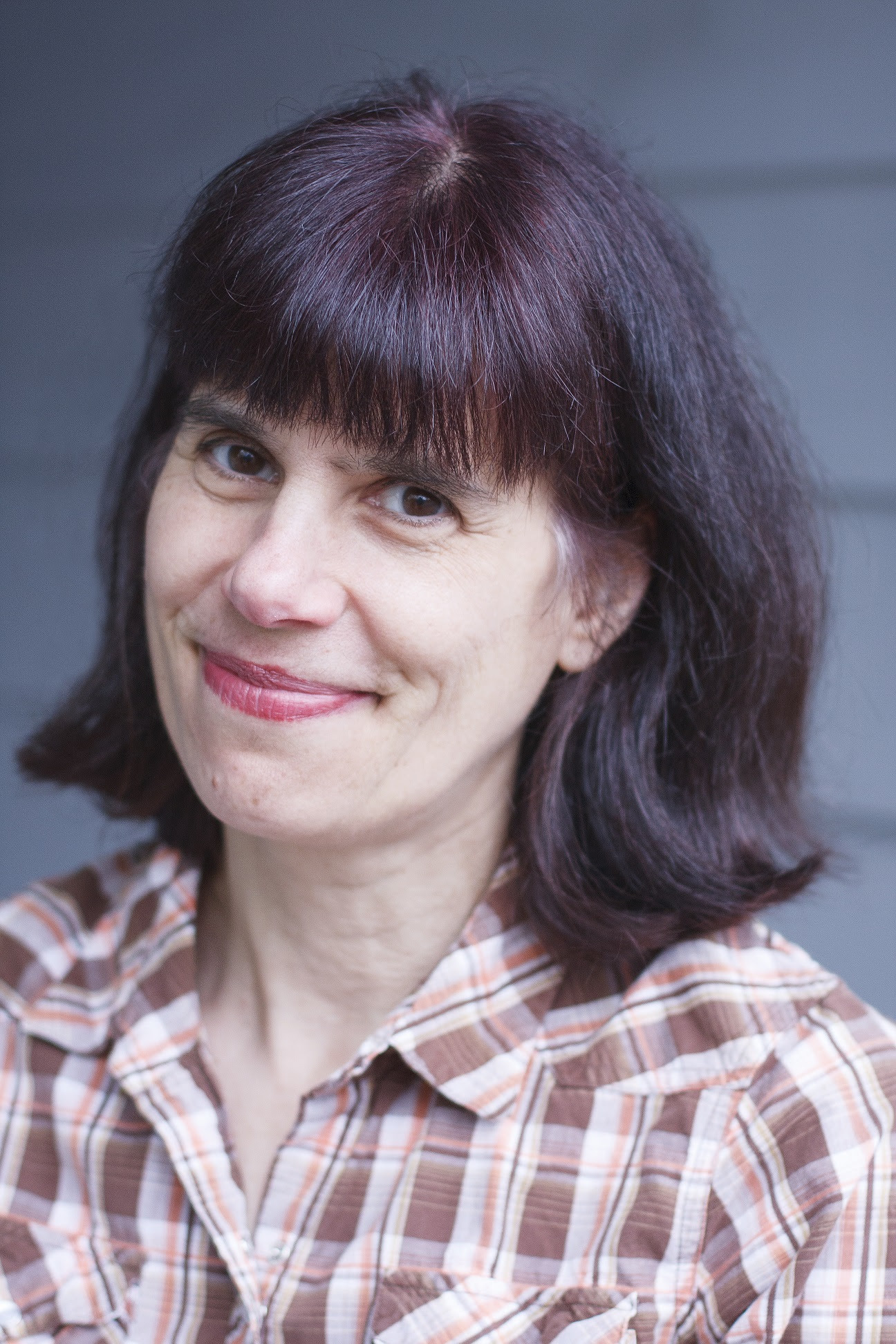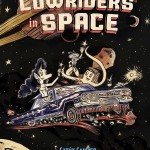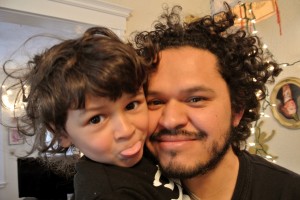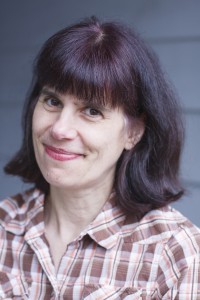We first met Cathy Camper when she won our Pitchapalooza at the great Portland bookstore Powell’s. The first book in the series did so well that the second one is out now, so we thought we’d pick her brain about books, lowriders, outer space, libraries and diversity in books.
Read the interview on the Huffington Post.
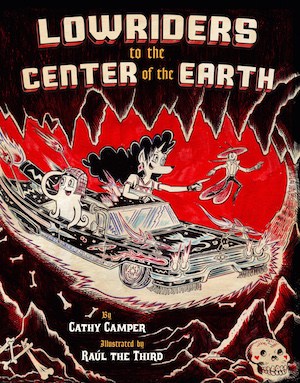
The Book Doctors: Tell us about the new book.
Cathy Camper: Lowriders to the Center of the Earth came out July 2016. This graphic novel follows Lowriders in Space. The three main characters are the same, but you can read each book on its own and still understand what’s going on. At the end of Lowriders in Space, Genie, Elirio, Lupe and Flapjack Octopus’s cat goes missing. The three embark on a crazy road trip to find their cat. It leads them down into the Underworld, ruled by Miclantecuhtli, the Aztec God of the Dead. He’s catnapped their gato, and to get back Genie, it will take all their combined wits and camaraderie to outwit La Llorona, Chupacabra driving a monster truck, and Miclantecutli, who wears a luchadore cape of eyeballs! Similar to the first book, Raúl III illustrated it all in ballpoint pen, with the addition of a green pen in this book, because they get lost in a maíz maze along the way.
TBD: How was it different writing the second book after the first book did so well?
CC: Once you have a book out there, there’s always pressure to deliver another book that’s equally good. Luckily, I was already thinking up book two at the same time I was writing book one. I had to do a big rewrite early on, which was tough, but the book kept getting richer and richer the more I wrote. Also – a big difference – when I wrote book one, I didn’t know who would illustrate it, or even if it would be a graphic novel or picture book. But with book two, I was able to write towards Raúl III, and his style. I even asked him, “What do you like drawing?” He said, “Bats and skeletons.” So I wrote the story to let his artwork flourish. In this way, we work together more like musicians, and it’s really fun.
TBD: There seems to be this idea in the publishing community that Latino people don’t read books. Could you address that please?
CC: Well that’s sure not been our experience – every school visit and author talk we’ve done, we have Latinx loving our book, both kids and adults. Those publishers might need to look at it the other way around; if people aren’t buying their books, maybe you don’t have things people want to read. School Library Journal just chose our book as one of their top Latinx books of 2016 for kids, and we got this best books of 2016 shout out from Gene Yang, Ambassador of Children’s Books, so there ya go!
TBD: What are some of the challenges of writing a graphic novel, as opposed to a novel without images?
CC: A graphic novel is a collaboration (unless you’re drawing it too), so you can’t be too precious about your words….lots get edited, cut and changed. Writing a comic is more like writing a film than fiction; your words are instructing actions. So you need to be like a director when you visualize what happens; it’s boring to have lots of static scenes with crowded dialog. Sometimes, you can sneak a little poetry into the text, but more often, the poetry exists in the meld between text and art.
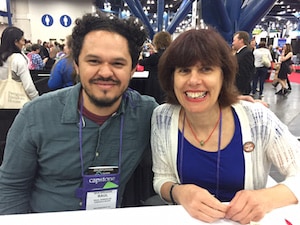
TBD: Tell us about the process of working with your illustrator.
CC: Raúl III and I are lucky, because we get along super well. When we started to work together, we had only spent around eight hours together (he lives in Boston, I live in Portland, OR), but we both have a good work ethic, a similar sense of humor, and we give each other a lot of give and take in the books’ creation. Generally, I write the story first with the editors, then it goes to Raúl and the art director, for the blocking of panels and pages, and artwork. In most kids’ picture books, the artist and illustrator only communicate via the editor. But Raúl and I often share ideas; he might suggest text, and I might tell him something to tuck in the illustrations. It really is like playing jazz, lots of improvisation and adding in things we discover along the way.
TBD: How has being a librarian affected your work as an author?
CC: I wrote these books because I couldn’t find them to give to kids at my library. We desperately need more diverse books, and books that appeal to boys. Working around teachers, parents and kids all day, I know what books are connecting with folks. I’m also pretty good at pitching books to people – I do it for my job! As a librarian, I’ve also learned a ton about publishing and the business side of books, how books are made, ordered and promoted.
TBD: What is your next project?
CC: I’m working on the third lowrider book. It’s called Blast from the Past; L’il Lowriders in Space. Remember L’il Archies, or the Muppet Babies? This is the same thing – it’s all about our three heroes when they were kids, their families and where they grew up. I have an Arab American picture book that will come out in 2019, called Ten Ways to Hear Snow with Penguin/Dial. There’s another Arab American picture book in the works, and a YA novel called Circle A, about some kids in the ‘80s that meet some punks squatting in an abandoned house. That one deals with issues of social justice, race, sexual orientation and how images are misused in the media, all issues that are front and center right now. I look at each book as a good adventure, you never know where it will lead.
TBD: What or some graphic novels you love, and why?
CC: For kids, I enjoyed Fantasy Sports by Sam Bosma, and The Hilda comics by Luke Pearson are really imaginative. I also recommend March Grand Prix by Kean Soo, for kids that ask for more comics about cars, since it’s about car racing. I thought the Lunch Witch books by Deb Lucke were also great. For adult comics, I love Ed Luce’s Wuvable Oaf, and thought the compilation The Shirley Jackson Project edited by Rob Kirby, of comics about Shirley Jackson, was fantastic.
TBD: Any exciting news about Lowriders in Space, since it came out in 2014?
CC: Yes, Lowriders in Space got nominated for a Texas Bluebonnet Award, so Raul and I have done a lot of author presentations down there, and felt all kinds of love from the Lone Star State. The Bluebonnet committee is made up of awesome librarians and educators, and they posted a lot of fun material educators and parents can use to supplement our book.
Also, both Raúl and I have heard many accounts of how our books connect with kids. The most touching is testimony that they are a gateway books, for kids who just wouldn’t read. For kids that don’t see themselves reflected in books, for kids that struggle with reading, for autistic kids – we’ve heard again and again our book was the spark that lit the flame of how exciting reading can be. As creators, we’d hoped to share a story in our heads with folks, but to have those stories open the door to the pleasure of a lifetime of reading? We are totally awed, and honored.
TBD: We hate to ask you this, but what advice do you have for writers, illustrators, or graphic novel people?
CC: Keep writing. Writing is like a boiling pot; if you have talent and write enough, it will get better and better, something good will eventually boil over and someone will notice. My other advice is to do work in the DIY/alternative world, the same as you do in the mainstream world. Eventually the two overlap, and the adventures and skills you learn in both end up complimenting each other. And for writers of color, and writers outside the mainstream, don’t give up! We need your stories, and you are the future.
[themify_hr color=”light-gray” width=”50″ border_width=”1″ ]
Cathy Camper is the author of Lowriders in Space, and Lowriders to the Center of the Earth, with a third volume in the works. She has a forthcoming picture book, Ten Ways to Hear Snow, and also wrote Bugs Before Time: Prehistoric Insects and Their Relatives. Her zines include Sugar Needle and The Lou Reeder, and she’s a founding member of the Portland Women of Color zine collective. A graduate of VONA/Voices writing workshops for people of color in Berkeley, California, Cathy works as a librarian in Portland, Oregon, where she does outreach to schools and kids in grades K-12.






